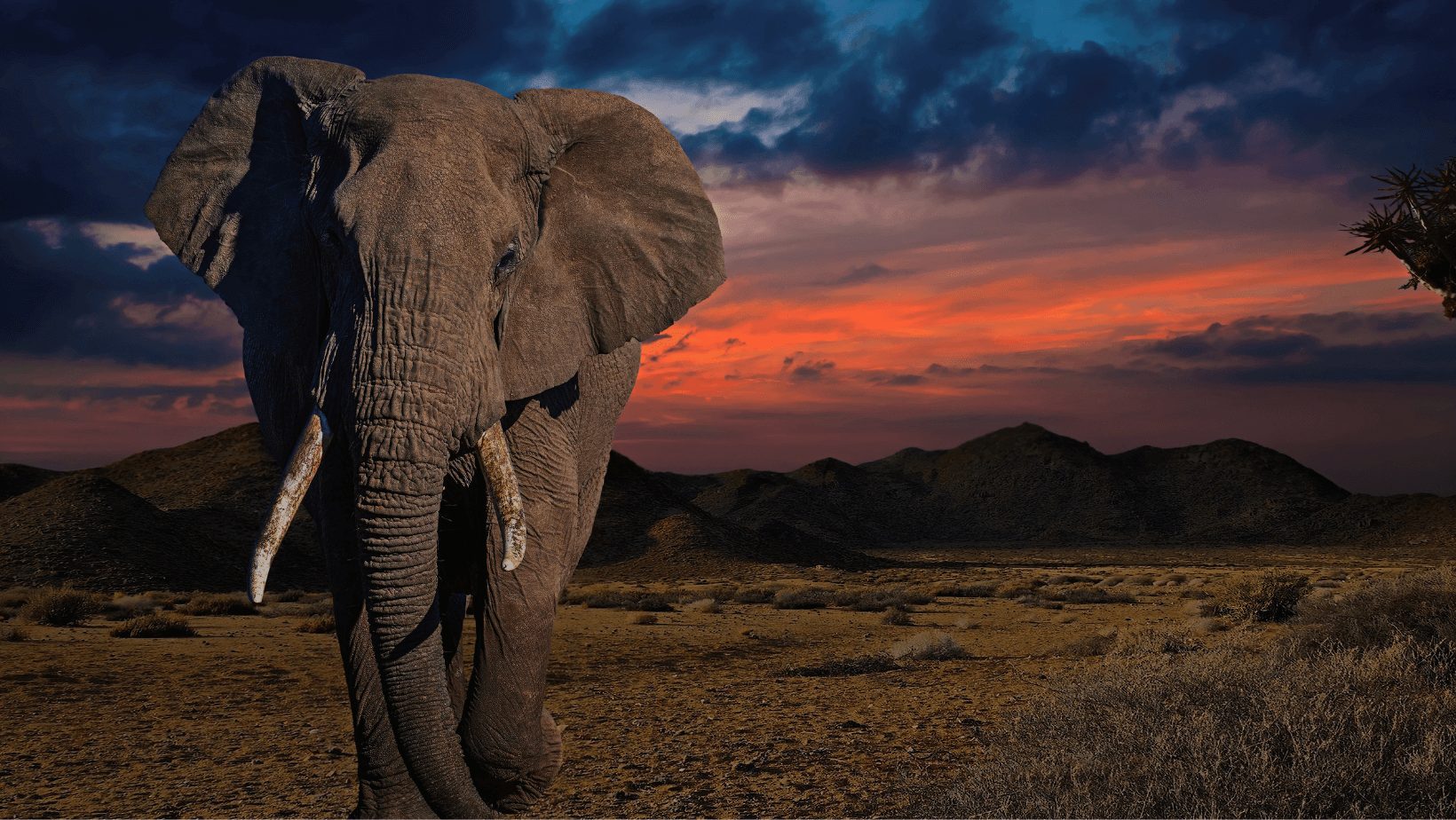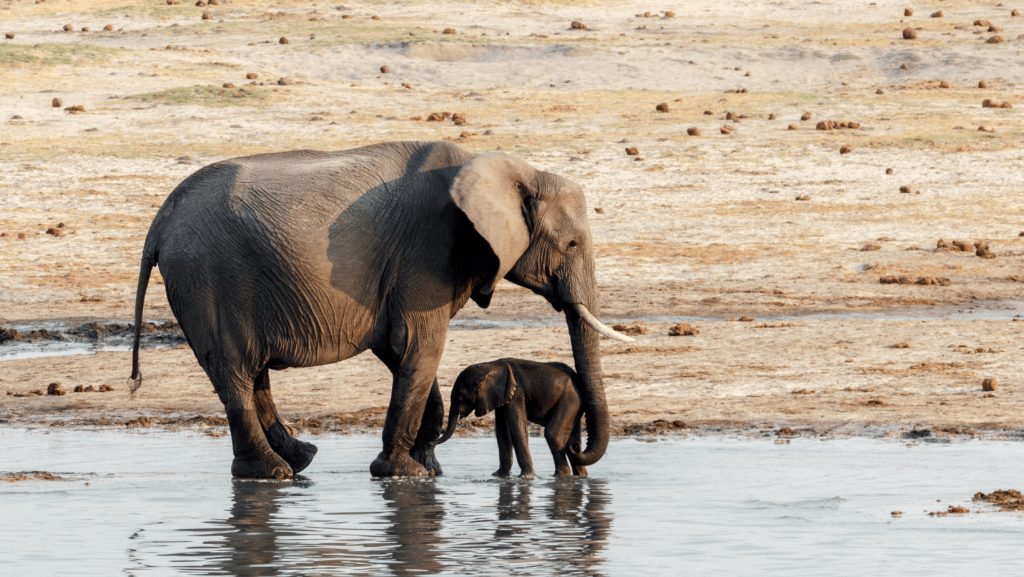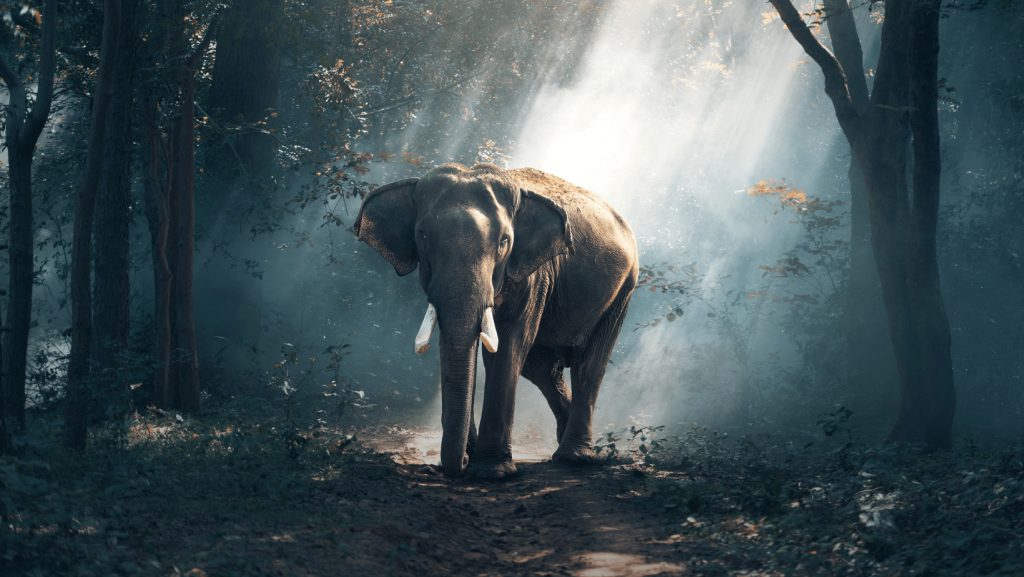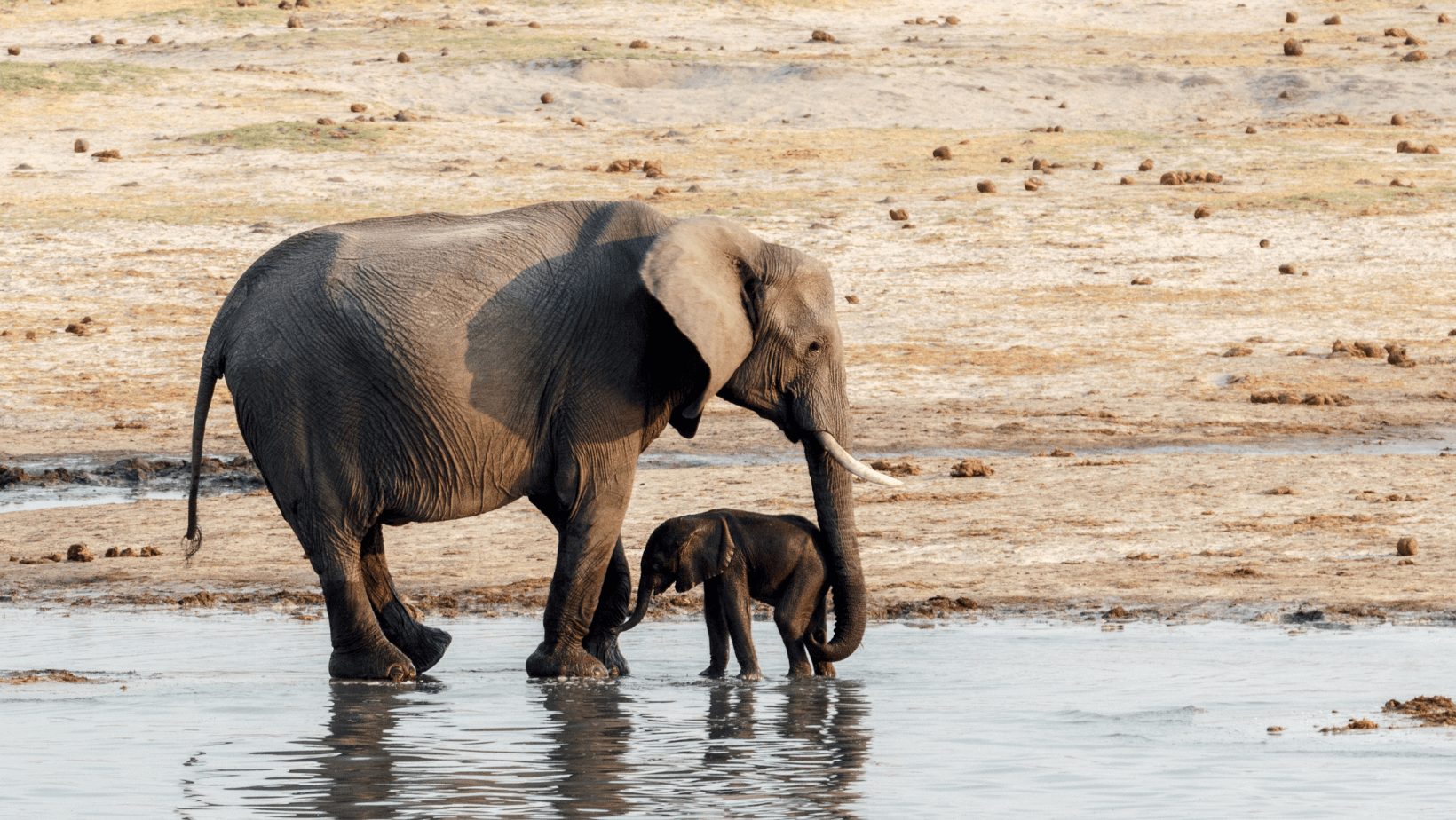
Species Of Elephants
There are three distinct species of elephants – African savanna (or bush), African forest, and Asian. The African savanna is the largest of the species, weighing up to 9 tons and standing 10 to 13 feet at the shoulder. The African forest was recognized as a separate species in 2000. They are smaller than their savanna relatives and live in rainforests as their name implies. Asian elephants are similar in size to the African forest and include three subspecies – Indian (or mainland), Sumatran, and Sri Lankan.
There are several features that differ between the species. One way to tell African and Asian species apart is by the size and shape of their ears. African elephants have much larger ears, that are roughly shaped like the continent of Africa. Their large ears are used to help the animals dissipate body heat. In contrast, the ears of Asian elephants are much smaller and are shaped like the Indian subcontinent.
Their trunks also differ. The African species have two “fingers” at the tip of their trunks, while Asian elephants have just one. Because of this, they take a different approach to picking up objects with their trunks. The Asian elephant typically curls the tip of its trunk around an item and picks it up with a method called the “grasp.” But the African elephant commonly uses the “pinch” to pick up objects in a manner similar to a human’s use of the thumb and index finger.

Family Structure
Elephants live in small family groups that are commonly led by one of the oldest females, known as “cows.” If they are in an area where food is plentiful, groups will often join together. Most males, or “bulls,” live in bachelor herds apart from the cows.
The gestation period of the elephant is the longest of any mammal at 18-22 months. An average newborn weighs about 220 pounds and is around 3 feet tall. Weaning is a long process and nursing will sometimes continue until the mother can no longer tolerate the pokes of her offspring’s emerging tusks.
Elephants also have one of the longest adolescent stages in the entire animal kingdom. Females will stay with their natal herd for their entire lifetime in most cases. Males usually leave their family group sometime between the ages of nine and 18. Since a wild elephant’s lifespan is an average of 56 years, that means that males often spend about a third of their life “at home.”

An Elephant Never Forgets
You may have heard the phrase “an elephant never forgets” used in popular culture. And there is evidence to suggest that the animals do have an exceptional memory. For one, the elephant’s temporal lobe – the area of the brain associated with memory – is larger and denser than that of humans. Memory does play a key role in the seasonal migrations of herds, as they remember the locations of water supplies along their migration routes.
Researchers have also observed intelligence in conjunction with memory. One elephant stripped tree bark using its tusks and trunk and chewed it to create a large ball. It then plugged a previously dug waterhole and covered the plug with sand. The elephant was later seen uncovering the sand and unplugging the hole to drink—a behavior that could be interpreted as tool-making.
As further evidence of their high intelligence, one study of captive Asian elephants suggested that they are able to recognize themselves in a mirror. This is a rare trait that has only been observed in a few other non-human animal species, including chimpanzees, orangutans, and dolphins.
Weekly Trivia
Enter your guess to reveal the answer.

